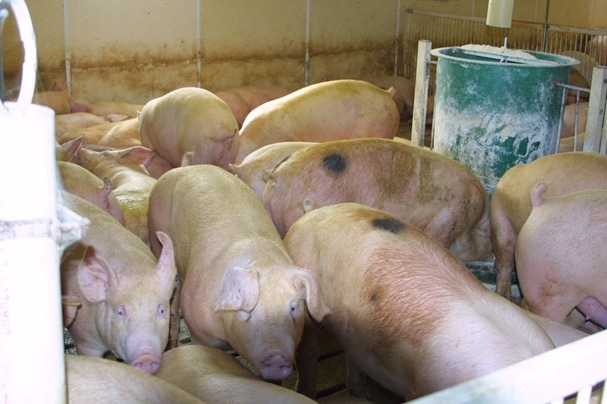2014 Could be Best Year for Pork in a Decade
January 17, 2014

Slow expansion of the U.S. pork industry fueled by low feed costs will likely result in more rapid growth of pork stocks in the latter part of 2014, says Purdue Extension agricultural economist Chris Hurt.
That could result in 2014 turning into the best year for pork producers in nearly a decade. If corn and soybean meal prices stay low as expected, hog weights and pork production should continue to increase into 2015, Hurt says.
“The U.S. Department of Agriculture reports the number of market hogs to be down fractionally in 2014, but weights are expected to run about 2% higher and result in a 1 to 2% increase in pork production for the first half of 2014,” Hurt says. “Farrowing intentions for this winter and coming spring are up 1 to 2%. With pigs per litter about 1.5% higher and higher weights, pork production in the last half of 2014 will be up 3%.
“Pork production is likely to continue to expand into 2015,” he says. That continuing growth will be met with strong demand both based on limited competition domestically and strong export demand. Total meat supplies of beef, pork, chicken and turkey combined are likely to remain unchanged this year.
Like what you’re reading? Subscribe to the National Hog Farmer Weekly Wrap Up newsletter and get the latest news delivered right to your inbox every week!
While chicken production is expected to grow by about 3% and turkey by about 2%, Hurt says beef supplies will fall by as much as 6% on the heels of a small calf crop and higher heifer-retention rates.
“Retail pork prices will be much lower than beef and will thus continue to pull some consumption away from beef at the retail counter,” he says. “USDA analysts expect pork export demand to increase by 4% and represent nearly 22% of total production.”
Last year, live-hog prices averaged $65 per hundredweight. Hurt says they are expected to average about $66 this year, with the highest prices ranging from $69 to $71 in the second and third quarters. Increased production during the summer and fall will then drive prices back down to below the 2013 levels.
Low production costs will, however, help maintain strong profit margins for pork producers.
“From 2000 to 2006, the estimated total cost of raising hogs was about $36 per live hundredweight,” Hurt says. “That reached a high on a calendar year basis of $67 in 2012. Costs were estimated at $64 last year and are expected to average about $56 for the 2014 calendar year.”
Part of what continues to drive low production costs is low feed prices. Corn averaged an estimated $6 per bushel in 2013. That price could fall to an estimated $4.45 per bushel average for the 2014 calendar year. Soybean meal averaged about $440 per ton last year and likely will drop to an average of $395 per ton in 2014.
According to Hurt, profits could reach about $27 per head, making this year the most profitable for pork producers since 2005. As supplies increase, he says those margins will tighten, but not disappear.
“Profit margins are expected to narrow in the fall of 2014 and into 2015 as pork supplies increase,” Hurt says. “However, returns still look to be profitable at least until the fall of 2015.”
Hurt's full report, Pork Industry Starts Modest Expansion, is available for download via the University of Illinois Extension's Farmdoc Daily at http://farmdoc.illinois.edu/marketing/weekly/html/010614.html.
You might also like:
WASDE Report Suggests 2014 Could be a Banner Year for Pork Producers
Murphy Brown Partners to Turn Manure Into Electricity
PEDV Lateral Spread Study Results Released
Nutrient Research Center Website Unveiled
You May Also Like



